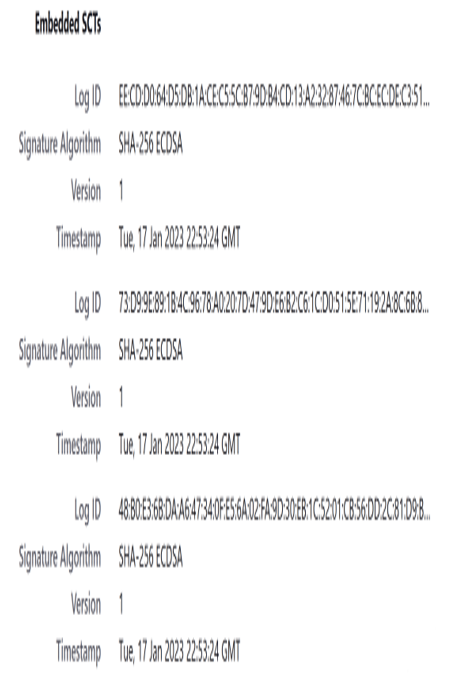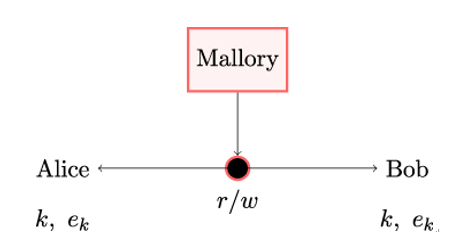10.5.10 OID filters
Using the oid˙filters extension, server Alice can send client Bob a set of pairs (Object Identifier (OID), value) that Bob’s digital certificate should match. If Alice decides to do so, she sends the oid˙filters extension in her CertificateRequest message.
The structure of the oid˙filters extension is shown in Listing 10.7. The filters variable holds a list of certificate extension OIDs with their corresponding values as defined in RFC 5280 Internet X.509 Public Key Infrastructure Certificate and Certificate Revocation List (CRL) Profile.
Listing 10.7: Structure of the oid_filters extension
struct {
opaque certificate_extension_oid<1..2^8-1>;
opaque certificate_extension_values<0..2^16-1>;
} OIDFilter;
struct {
OIDFilter filters<0..2^16-1>;
} OIDFilterExtension;
If server Alice sends client Bob a non-empty oid˙filters extension, the certificate included in Bob’s response must contain all specified extension OIDs that Bob recognizes.
All specified values must be present in server Bob’s certificate for every extension OID that Bob is able to recognize. According to the TLS 1.3 specification, Bob must ignore any unrecognized certificate extension OID.
If client Bob ignores some of the required certificate extension OIDs and, as a result, the certificate that Bob presents to server Alice does not satisfy her request, Alice may either continue with the TLS handshake without appropriate certificate-based client authentication or terminate the TLS handshake and transmit the unsupported˙certificate alert.
10.5.11 Receiving a Certificate message
TLS endpoints have to follow certain rules when validating digital certificates. If client Bob receives an empty Certificate message from server Alice, Bob must immediately terminate the TLS handshake and send the decode˙error alert.
If, on the other hand, client Bob sends an empty Certificate message to server Alice, Alice is free to decide whether she continues the TLS handshake without proper authentication of client Bob—or, more precisely, a party claiming to be Bob—or terminates the TLS handshake and sends the certificate˙required alert.
Moreover, if the certificate chain received from client Bob is flawed—as an example, if it is not signed by a certification authority that Alice knows and trusts—Alice may continue or terminate the TLS handshake as she prefers.
If Alice or Bob receives a certificate that they would need to validate using any signature algorithm that uses the insecure MD5 hash function, they must immediately terminate the TLS handshake and send the bad˙certificate alert. The TLS 1.3 specification recommends Alice and Bob do the same if they receive a certificate that must be verified using a SHA-1 based signature algorithm.
Instead, the TLS 1.3 specification recommends all TLS endpoints transition to signature algorithms that use SHA-256 or stronger hash functions. In addition, TLS 1.3 allows a digital certificate that contains a key for one signature algorithm to be signed with a different signature algorithm.



